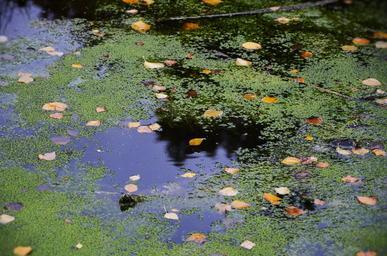Portrait photography is a fascinating genre that captures the essence of human expression, emotion, and character. From posed family portraits to candid street shots, the art of portraiture has evolved dramatically over the years, influenced by culture, technology, and artistic movements. In this extensive exploration, we will delve into various styles of portrait photography, examining what sets them apart and how they can be employed effectively.
The Art of the Portrait: Understanding Different Styles in Portrait Photography
Portrait photography is not just about capturing a face; it’s about telling a story. Whether it's through lighting techniques, color schemes, or composition choices, each photograph can evoke a range of emotions and narratives. This article will guide you through many styles of portrait photography—each with its unique flair and approach—while providing practical insights for aspiring photographers.
1. Traditional Portrait Photography
Traditional portrait photography focuses on capturing individuals or groups in formal settings or poses. Often characterized by classic compositions and controlled lighting, this style highlights the subject's features clearly.
1.1 Characteristics of Traditional Portraits
- Posed Composition: Subjects are often positioned in a way that highlights their best features. Even Lighting: Soft lighting is used to minimize harsh shadows. Backdrop Choices: Neutral or textured backgrounds help keep focus on the subject.
2. Candid Portrait Photography
Candid portraits capture spontaneous moments that reveal genuine emotions. These images often tell a story without staged poses.
2.1 How to Capture Candid Moments
- Be Observant: Watch for interactions between people. Use Natural Light: This creates a more authentic feel. Stay Discreet: A longer lens allows you to capture moments without intruding.
3. Environmental Portraits
Environmental portraits provide context by including elements from the subject's surroundings. They help convey personality and lifestyle.
3.1 Importance of Setting in Environmental Portraits
Including surroundings can:
- Reflect personal interests Showcase profession or hobbies Add depth to storytelling
4. Fine Art Portrait Photography
Fine art portrait photography merges traditional techniques with artistic vision, often resembling paintings or sculptures rather than mere photographs.
4.1 Techniques Used in Fine Art Photography
- Manipulated Reality: Use props or post-processing to create surreal images. Conceptual Themes: Develop an idea that resonates emotionally with viewers.
5. Abstract Self-Portrait Photography
Abstract self-portrait photography focuses on expressing identity through non-conventional imagery—not always showing the face or body directly.
5.1 Elements of Abstract Self-Portraits
This genre often includes:
- Unique angles Reflections Creative use of props
6. Faceless Self-Portrait Ideas
Faceless self-portraits emphasize other aspects like hands or clothing instead of facial features.
6.1 Benefits of Faceless Self-Portraits
They allow for:
- Emotional interpretation without facial cues Greater focus on themes like vulnerability or anonymity
7. Aesthetic Colorful Portrait Photography
This vibrant style employs bold colors and creative compositions to produce eye-catching images that evoke strong emotional responses.
7.1 Techniques for Achieving Aesthetic Colorful Shots
Utilizing:
- Bright backdrops Color gels on lights Post-processing adjustments
8. The Role of Lighting in Portrait Photography
Lighting can make or break a portrait photo; understanding its nuances is crucial for photographers at all levels.
8.1 Types of Lighting Techniques
Different techniques include:
| Technique | Description | |---------------------|--------------------------------------------------| | Natural Light | Utilizes sunlight; great for outdoor shoots | | Studio Lighting | Controlled environment using softboxes/umbrellas | | Rembrandt Lighting | Creates dramatic shadows with triangular light |
9. Composition Techniques in Portrait Photography
Composition dictates how elements are arranged within your frame, influencing viewer perception significantly.
9.1 Key Composition Rules to Consider
Consider applying:
- Rule of Thirds Leading Lines Symmetry
10. Capturing Emotion in Portraits
An effective portrait captures raw emotion, resonating deeply with viewers.
10.1 Tips for Evoking Emotion from Subjects
To achieve emotive portraits:

- Build rapport with your subject Use music during shoots to set mood
FAQs Section
11 FAQs about Portrait Photography
Q1: What is portrait photography? A: It's a genre focused on capturing the likeness and personality of individuals through various styles and http://journeynotes777.huicopper.com/mixing-vintage-and-contemporary-decor-for-a-timeless-look techniques.
Q2: How do I choose a style for my portrait shoot? A: Consider your subject’s personality and preferences as well as your artistic vision when selecting a style.
Q3: What equipment do I need for portrait photography? A: A DSLR or mirrorless camera with good lenses (preferably prime), lighting equipment, and reflectors are essential tools.
Q4: How important is post-processing? A: Post-processing enhances your images but should align with your style—keep it consistent!
Q5: Can I mix different styles in one shoot? A: Absolutely! Blending styles can create dynamic storytelling within your portfolio.
Q6: What should I do if my subjects feel awkward? A: Engage them in conversation; create an atmosphere where they feel comfortable expressing themselves naturally.
Conclusion
In conclusion, “The Art of the Portrait: Understanding Different Styles in Portrait Photography” provides insight into various facets of this captivating field—from traditional methods to abstract interpretations—all while emphasizing emotion-driven storytelling through aesthetics and technique mastery. As you explore these diverse styles—whether you’re aiming for fine art photography or candid shots—remember that every click holds potential to share stories beyond mere visuals.
With practice and exploration, you'll find your voice within this vast realm—a journey well worth taking!